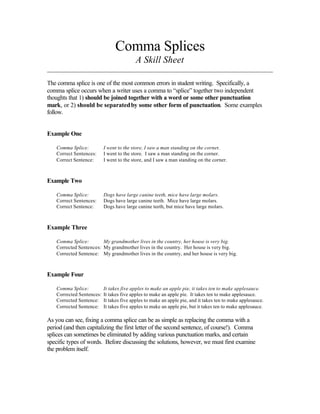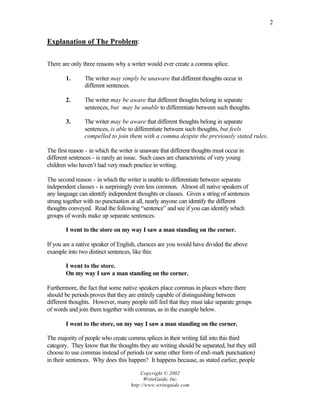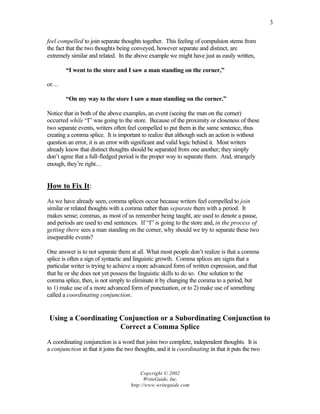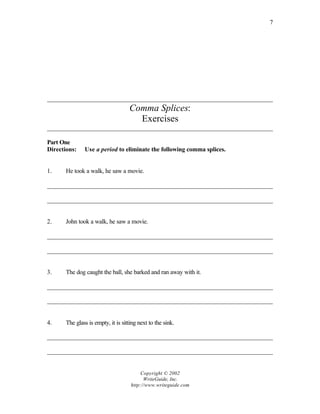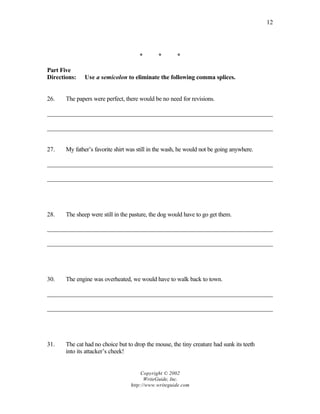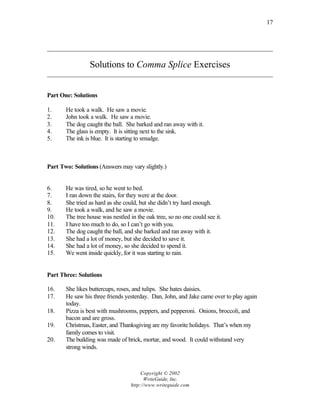The document discusses comma splices, which occur when independent clauses are joined by a comma instead of a period or other punctuation. It provides examples of comma splices and their corrections. The most common way to fix a comma splice is by replacing the comma with a period, turning the independent clauses into separate sentences. However, comma splices can also be corrected by joining the independent clauses with a coordinating conjunction like "and", "but", or "or". Using a coordinating conjunction keeps the ideas together in one sentence rather than separating them.
